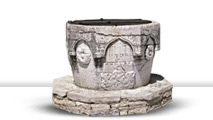
- Saline di Sicciole - Valle del Dragogna
- S. Pietro dell’Amata - Villanova di Pirano - Padena
- Paugnano - Parco naturale: Il ciglione carsico - San Servolo
- San Sergio - Ospo - Covedo
- Momiano - Grisignana - Pietrapelosa - Il Quieto
- Bastia - Castagna - Parenzana
- Portole - Piemonte - Levade - Stridone
- Terme di Santo Stefano - Foresta di Montona - Visignano
- Grotta del Marmo - Regno di Festini - Grotta Baredine
- Canale di Leme - San Michele di Leme - Contea - Duecastelli
- Canfanaro - Valle - Palù - Dignano - le is ole: Brioni - Fasana
- Sanvincent - Antignana - Pedena - Gallignana
- Bellai - Sumbero - Cosliacco - Passo
- Čepićko Field - Kršan - Boljun Castle - Lupoglav
- Plomin - Kvarner Gulf - Brseč
- Nature park Učka - Mošćenice
Fianona - Il golfo del Quarnero - Bersezio
Kvarner gulf
This exotic combination of the Mediterranean and mountains is situated in the northern Adriatic, between the Istrian Peninsula and northern Croatian littoral. Here, the sea depth is considerably greater than in the upper Adriatic, which is filled up with abundant silt of the Po River and other Italian rivers, making it more navigable.
The significance of Kvarner as a region connecting the Mediterranean and Central Europe is evident up to this day. In prehistory the area was inhabited by the Liburnians who established trade connections. Numerous monuments from the Roman times speak of the influence of such a powerful culture on this region. Many rulers changed over the centuries; Kvarner was divided and underwent changes. The Baška Tablet (Bašćanska ploča) discovered on Krk Island, dating from about 1100 is one of the most valuable monuments of the Croatian language that testifies to the settling of the Croats in the 7th c.
The Austro-Hungarian rule had a great impact throughout history, during that time summer residences and villas for the rich aristocracy were built here, which is related to the very beginnings of tourism in the Kvarner.
Напечатай страницу Отправь другу














